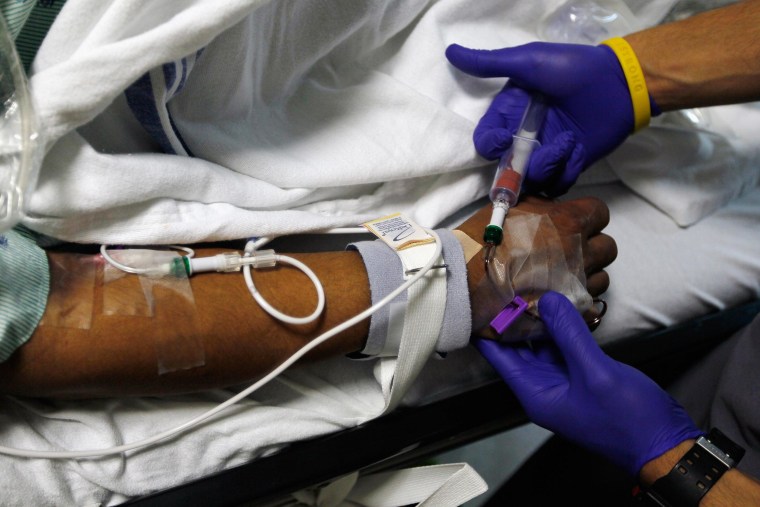Black children with acute appendicitis –- a clearly painful emergency -- are less likely than white children to get painkillers in the emergency room, researchers reported Monday.
And nearly as troubling, only about half of any of the kids got painkillers, even though they’re strongly recommended in cases of appendicitis, the researchers found.
“Black patients with moderate pain were less likely to receive any analgesia, and black patients with severe pain were less likely to be treated with opioids,” Dr. Monika Goyal of the Children’s National Health System in Washington and colleagues wrote in the Journal of the American Medical Association’s JAMA Pediatrics.
What’s to blame? Probably a combination of an unwarranted fear of opioids such as morphine and fentanyl, combined with unconscious bias against African-American kids, experts said.
"Black patients with severe pain were less likely to be treated with opioids."
The researchers used national survey data from 2003 to 2010, covering more than 900,000 children with acute appendicitis. They thought studying appendicitis would be a good starting point since there's broad agreement among experts that it's a condition that merits pain relief.
Only 57 percent of the kids got anything for their pain in the emergency department, they found, and only 41 percent got an opioid drug. And just 12 percent of black children got an opioid drug for pain.
“Our findings suggest that there are racial disparities in opioid administration to children with appendicitis,” Goyal’s team wrote.
“Our findings suggest that although clinicians may recognize pain equally across racial groups, they may be reacting to the pain differently by treating black patients with nonopioid analgesia, such as ibuprofen and acetaminophen, while treating white patients with opioid analgesia for similar pain.”
The researchers note that painkillers, including opioids, are strongly recommended for appendicitis. There were fears in the past that giving painkillers would mask symptoms important for diagnosing the causes of abdominal pain, but those fears have long been shown to be unfounded.
There’s also a fear of giving opioids to children. It’s possible to overdose and to have dependence develop. But the whole point of opioids is to control severe pain like that seen in appendicitis, and there are protocols for making sure children don’t overdose and don’t become dependent.
"We are left with the notion that subtle biases, implicit and explicit, conscious and unconscious, influence the clinician’s judgment."
Dr. Eric Fleegler and Dr. Neil Schechter of Boston Children’s Hospital and Harvard Medical School say emergency department doctors aren’t doing their jobs if they don’t control pain in all children, including black children.
“If there is no physiological explanation for differing treatment of the same phenomena, we are left with the notion that subtle biases, implicit and explicit, conscious and unconscious, influence the clinician’s judgment,” they wrote in a commentary.
“It is clear that despite broad recognition that controlling pain is a cornerstone of compassionate care, significant disparities remain in our approach to pain management among different populations,” they added.
“Strategies and available knowledge exist to remedy this unfortunate situation; we can and should do better.”
The findings are not surprising, they added. Other studies have shown biases in giving pain medication and in medical treatment in general.
“Unfortunately, however, these findings fit a longstanding pattern. There is a substantial body of evidence documenting health care disparities during the past three decades, including disparities in pain management,” they wrote.
It’s possible that black kids are less likely to say they’re in pain
There’s one easy solution, the researchers suggested: Ask patients if they want pain medication.

